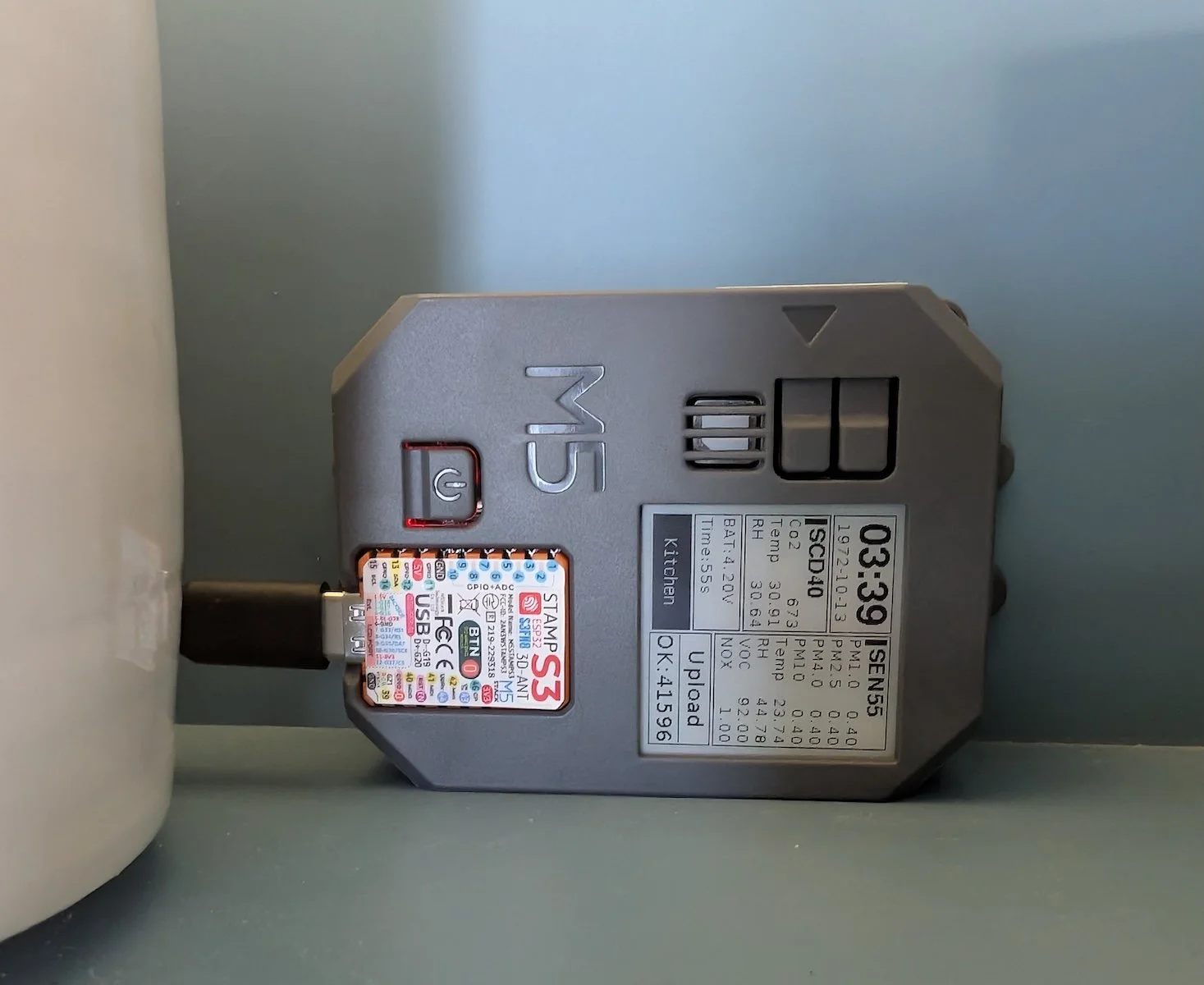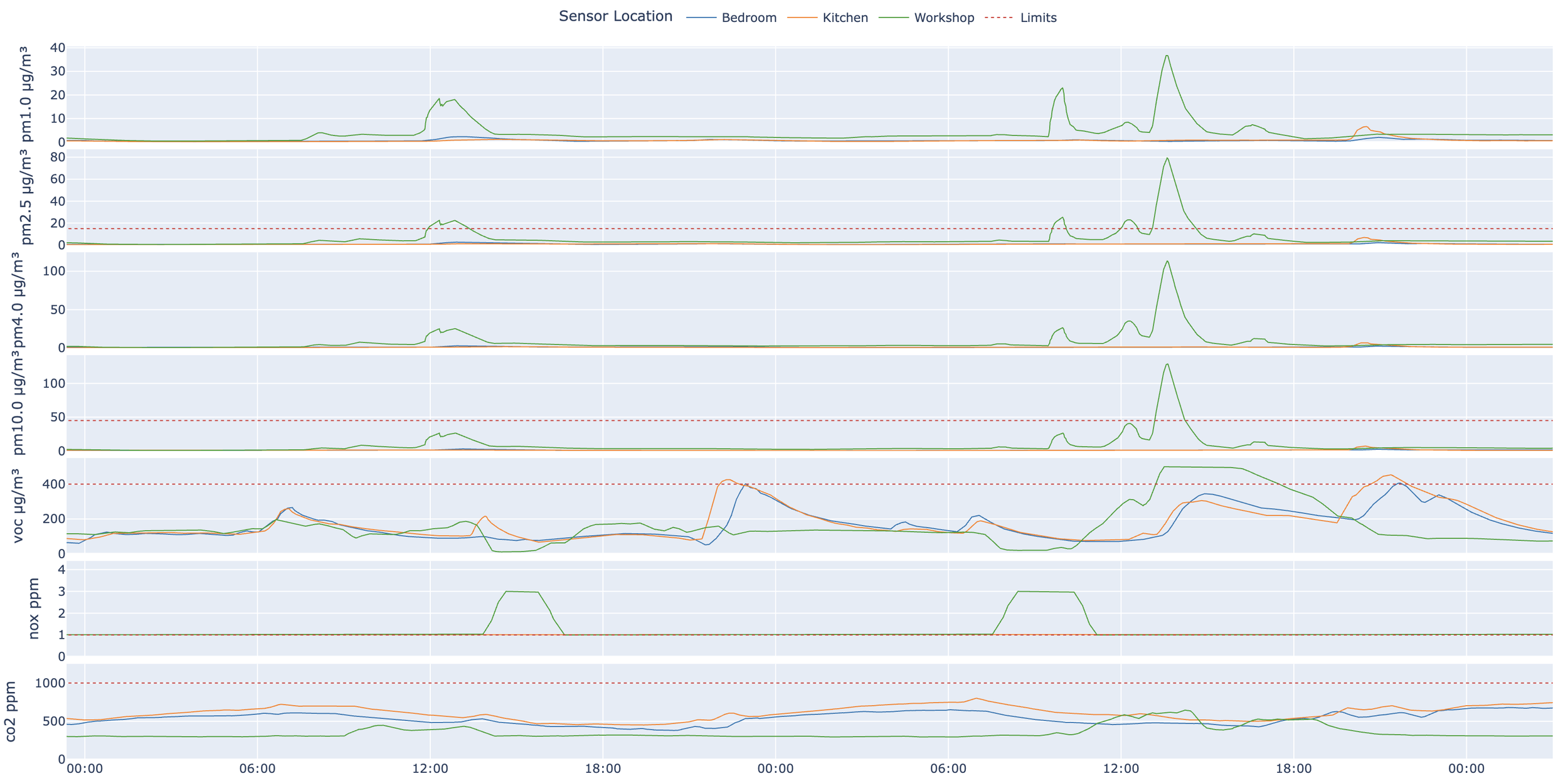A few months ago, I had what I initially thought was an extreme allergic reaction - perhaps to earlier-than-usual seasonal allergies, or perhaps to me being a little too lazy in the workshop with not using my JDS air filter, dust collection system, and 3M respirator / dust mask every single time. Though fortunately I recovered fairly quickly - albeit after copious use of an albuterol inhaler prescribed during an urgent care visit - I decided it was time to invest in keeping the air in my workshop (and home) clean.
In-Home Air Filters
My wood workshop is in the garage, which also has the HVAC equipment, and of course, me coming & going throughout the day as I break for lunch, switch to design, or just take a few hours off. So of course, dusty air is likely to seep inside as well. I augmented the one air filter I had purchased years ago during San Francisco’s Orange Sky day with a second one in the bedroom, and did a deep clean of the first devices, replacing some filters that probably should have been replaced years earlier.
Though you can find a dozen listicles of “the best air filters” - and I can’t compete with any of those - I’m a fan of this Coway AP-1512HH filter because its easy to hide in the open; its relatively quiet in all but its highest setting; it has cleanable and easily replaceable filters; and it automatically adjusts its speed based on the ambient air quality.
Measurement
This sensor has an integral SCD40 (for CO2) and SEN55 (for everything else), a paper display, WiFi for cloud connectivity. Though I’m leaving it plugged in via USB-C, it also has a small internal battery for limited wireless use.
Of course, it’s helpful to actual know what the air quality is in the first place, both to know if there’s a problem, and to try to get a handle on what / when its worse, or better. Just like finding a good air filter, you can find lots of online sites that identify the “best air monitors”; I ultimately chose this M5stack air quality that have a pair of sensors in them that cover particular matter (PM1.0, PM2.5, PM4.0 & PM10) and a few other pollutants (VoC, NoX, and CO2 levels).
The M5stack monitor has great ratings for the quality of its sensors, is small and unobtrusive and easy to set up, but lacks in one key area: data logging / data visualization. Fortunately, those who know me know I like a small programming challenge (or opportunity), and so I’ve built a simple local logging & visualization capability that allows us to see what is going on in the house.
Dust Collector Automation
Of course, the best way to stop wood dust from ending up everywhere is to catch it at its source, with good dust collection. And though I have a great dust collection system, I’ll confess that I don’t always use 100% of the time, especially if I’m using a tool “just for a few minutes”. Sometimes I can’t find the remote control for the dust collector; sometimes, especially with my sanders, I have to swap around hoses at the back of the machine. And sometimes when I am using it, I only realize halfway through the task that there’s blast gate that still open on a tool I used previously, so the suction on the tool I’m currently using is half what it should be.
Time to get some automated blast gates and clean up some of the hosing / connections so that’s no longer a problem. I’ve used the iVac remote control for almost a decade, and it works great, but I’ve been loathe to purchase their blast gates / tool triggers, at $250/per tool. But I somewhat fortuitously came across a used collection of them in Santa Cruz, picking up five for the price of one (plus a few extra parts), and have just about finished setting that up, with some rerouted hose lines as well.





Now the dust collector automatically turns on, and the right blast gate automatically opens for the tool (and closes when I’m done). Much better!
Automatic Workshop Air Filter
Similarly, I have a ceiling-mounted air filter which does a good job of keeping the air clean - if I use it. This one I don’t always use because its controls are a little annoying: it can’t be controlled by a wall switch, but rather, requires me to set a timer and fan speed on it by stepping on my tiptoes, so I similarly don’t always bother if I’m doing something “small”.
I bit the bullet here, and rewired it to bypass its internal control panel, instead being always on. And then I added an external timer integrated to my workshop lights, so that every time I turn on the lights, the air filter turns on and stays on until two hours after the shop lights go out.
Best Safety is Safety You Use
Of course, I still use my 3M respirator - when I’m doing more than a few moments of something that produces wood dust. But the changes and improvements I’ve described above now ensure that I’m always using the dust collector, and always using the workshop air filter. And I now have a better handle on inside air pollutants, and have doubled the air filtering inside the house as well.
Circling back to my “allergic reaction” that triggered this, though, turns out it wasn’t allergies afterall: as a participant in a community health research program, I periodically mail in nasal swap samples, sort of like those COVID tests we have all come to know and love. Well, a couple months later, I got an email: one of those samples I mailed in during my bout of “allergies”, was actually an RSV infection. So while it ultimately turned out all these precautions were not the root issue for the problem that time, these upgrades will hopefully help keep my lungs healthy to continue woodworking for years to come.








